Thursday, June 25, 2009
Anyone for a joint?
Ten weeks and one day after starting the sett paving project at The Old Croft in Knutsford, the very last sett was laid, and now the jointing, which will take around 3 or 4 days, begins.
Four different sett patterns have been used over the nearly 500m² of paving: guilloche, radial, transverse broken bond and fans each make a contribution to the overall design, showing off the best in craftsmanship as well as bringing out the best in the stone, not to mention the stunning property itself.
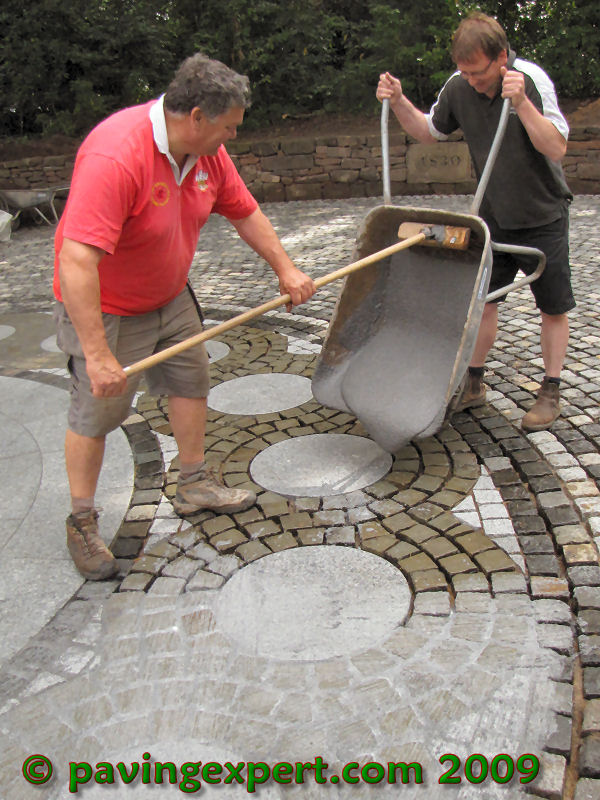
Choosing the jointing was a tricky decision. The sheer cost of the project to date, including the money paid for the aborted first attempt by the Cheshire Cowboy Crew, urge caution when it comes to jointing, and there’s not much that is cheaper than a sand/cement slurry. However, such an option would cost far more in terms of labour, and then there’s the lengthy post-jointing cleaning process that is never 100% successful when working with cement products.
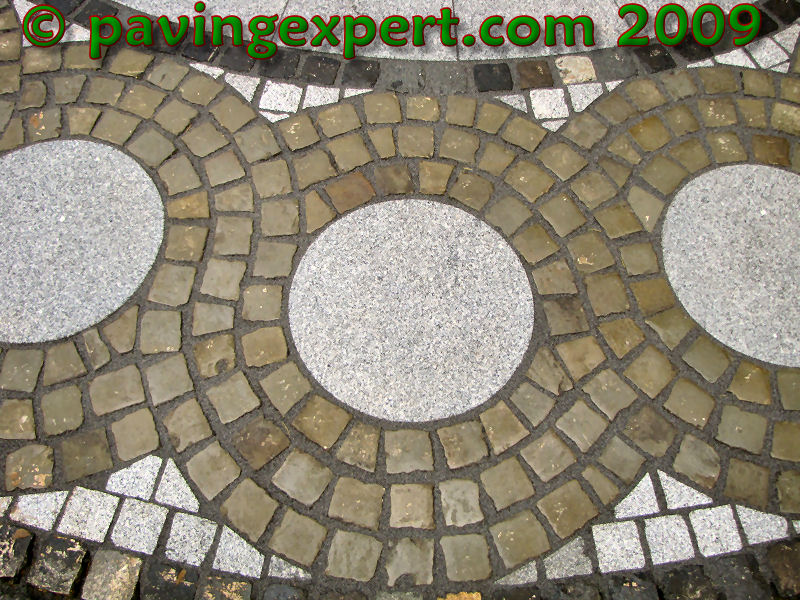
Resin mortars are significantly faster to apply, and have the advantage of leaving the pavement surface in pristine condition with no stains or blemishes, but they ain’t particularly cheap. However, it seems silly to spoil the ship for a ha’p’orth of tar at this stage, so it was decided, through gritted teeth (and mixed metaphors), to bite the bullet and go with the resin mortar. After a lengthy discussion,
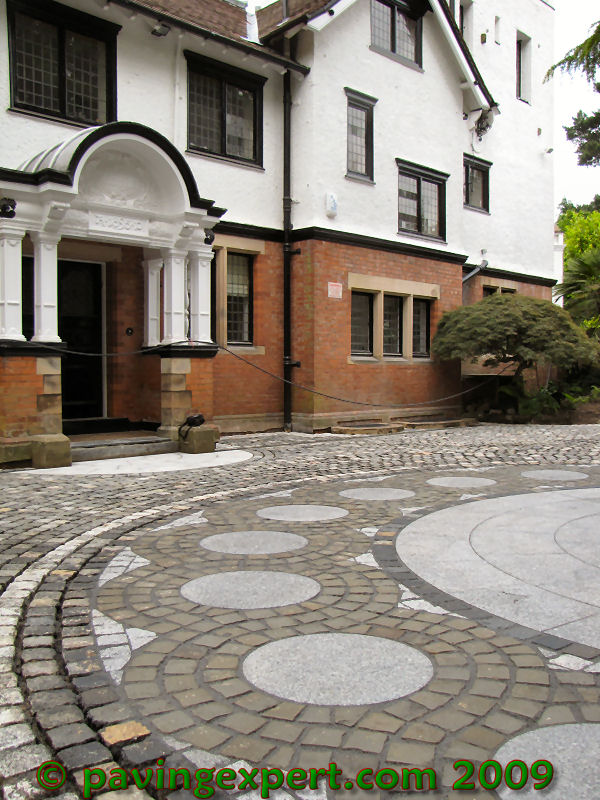
So Tuesday saw the start of the long process, starting with the central circle and the guilloche and over the course of an artificially short day, completing somewhere around 100m² before knocking-off time. Jointing continues, and should be finished by the end of the week - look out for more photos at the start of next week......
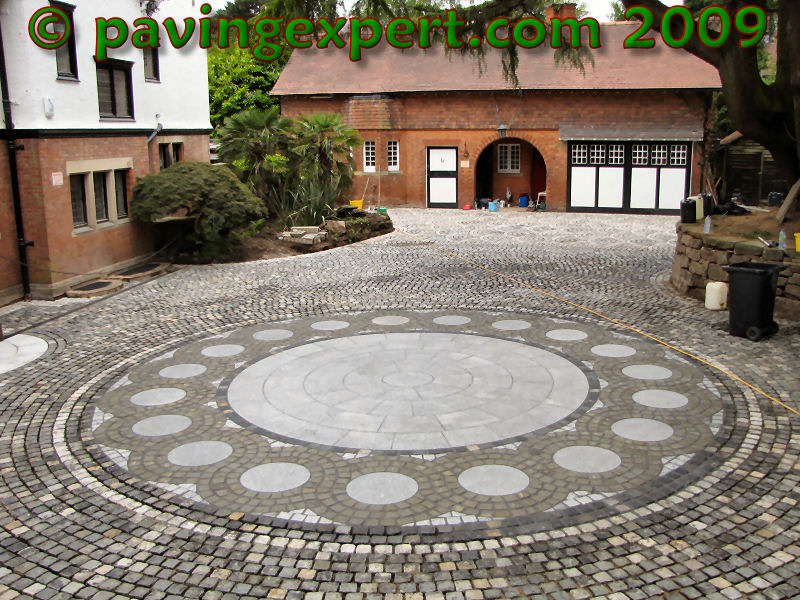
Thursday, June 11, 2009
On the home run...
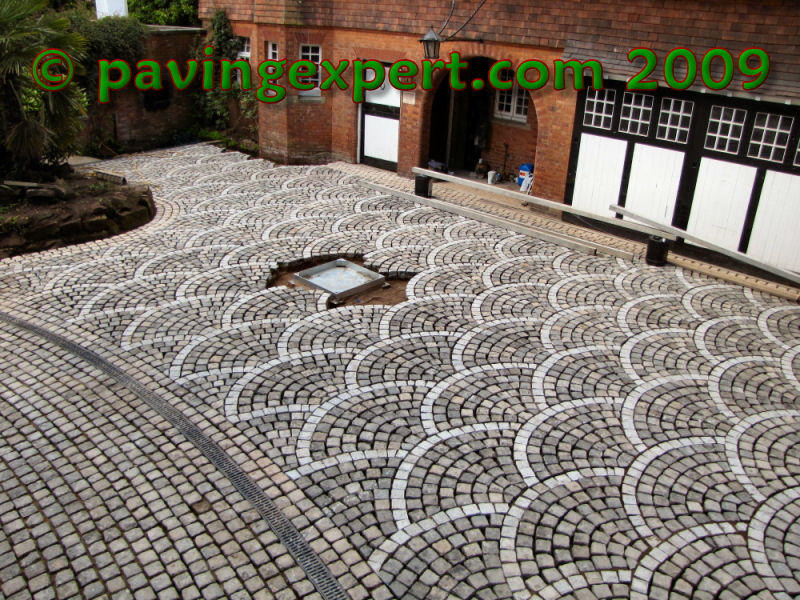
The fan pattern layout has really come into its own since they have 'spread out' over the widest section which shows off this pattern to its best effect. This latest photo shows the progress albeit without the paving to the recess tray (heavy duty 750x750 covers supplied by Clark Drain) being completed, but the tray was only installed this morning, so needs 24 hours to allow the bedding mortar to harden before it's loaded with all those setts.
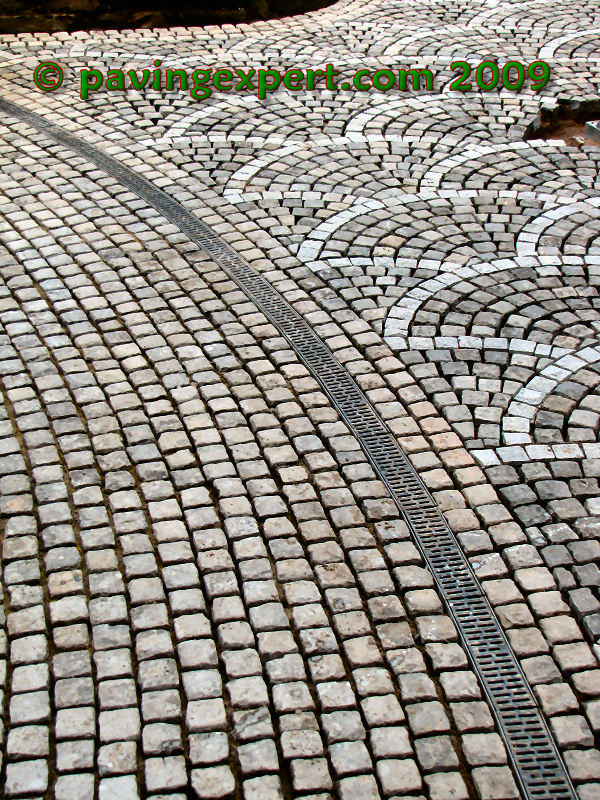
On the subject of ironwork, the cast iron gratings to the Aco Channel Drain have now been fitted to the channel installed at the curving boundary between the circular layout setts and the fan pattern. We're really pleased with these, as the simple iron grating suits both the property and the sett paving. You'd swear they'd been there since the house was built, and by allowing them to follow the curve, they seem such a natural break between the two layouts.
Sunday, June 07, 2009
Not fannying around
Cookie, proprietor and chief sett layer for The Original Stone Paving Company who are constructing the paving, prefers to use a steel frame to guide accurate laying and alignment of the fans, but due to the special nature of this job, and the fact that reclaimed setts are being used, the standard fan frame wasn't quite right, so we had to have a new frame assembly fabricated to order and that arrived on site last Monday.

You can just make out the frame in the photo above. The full assembly comprises a number of individual 'fans' that are bolted together to ensure accuracy, and then set to level to guide precise position and levelling of the setts as they are laid inside each 'frame'. There are almost as many methods for laying sett fans as there are tradesmen capable of doing the job properly, but this, for me, is the simplest, speediest and least problematical method.

As can be seen in this close-up shot of a single fan, the number of cut setts is kept to an absolute minimum - we reckon on 6-8 per fan, and these are predominantly simple trimming cuts rather than full dressing cuts, so speed of laying is maintained as far as is practicable. Also note how the outermost course of each fan has been laid using a lighter-coloured sett. These are new white-grey Egyptian Granite setts, with a basic cropped texture but as there is only the once course per fan, that won't impede traffickability for pedestrians too greatly. What it does do, however, is gently emphasise each fan as an individual.
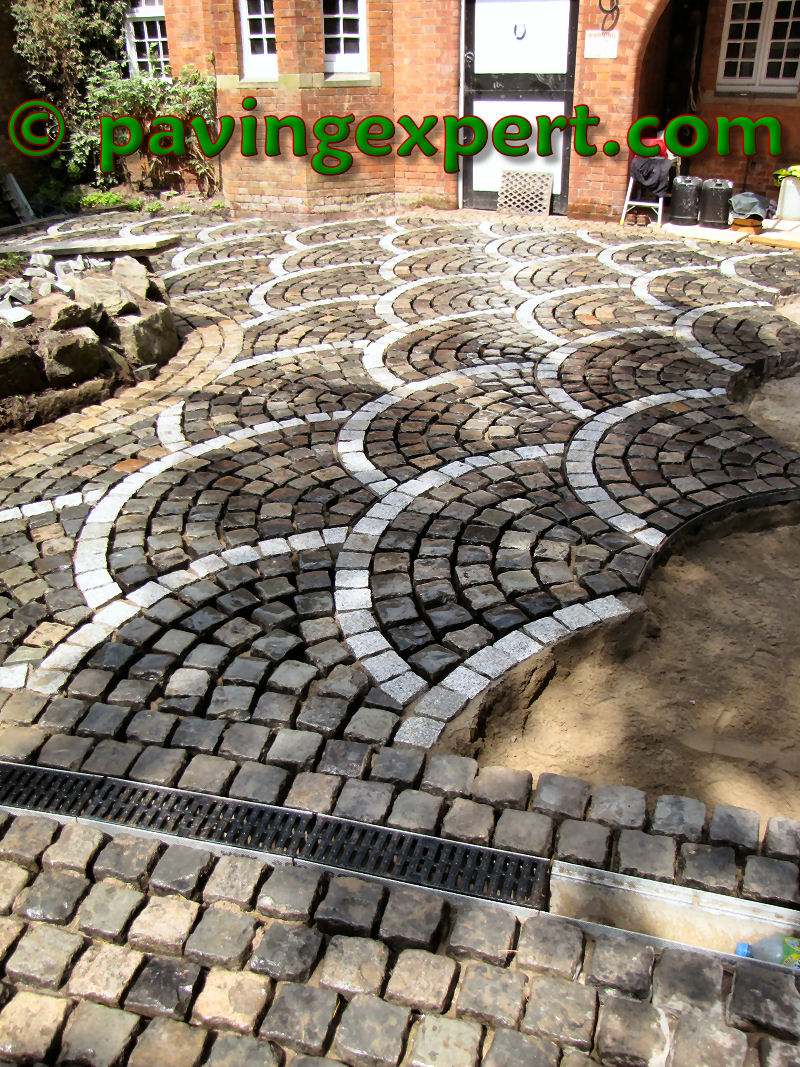
And the effect is, just as you'd expect on this job, truly stunning. In this photo, the setts have just been dampened down. in the very hot weather that we were enjoying when this section was laid, the pre-mixed bedding mortar can dry out too rapidly, so every hour or so during the heat of the day, the whole area is hosed down to aid proper curing of the bedding mortar, and it helps bring out the natural beautiful colours of the reclaimed setts.
Subscribe to Posts [Atom]
